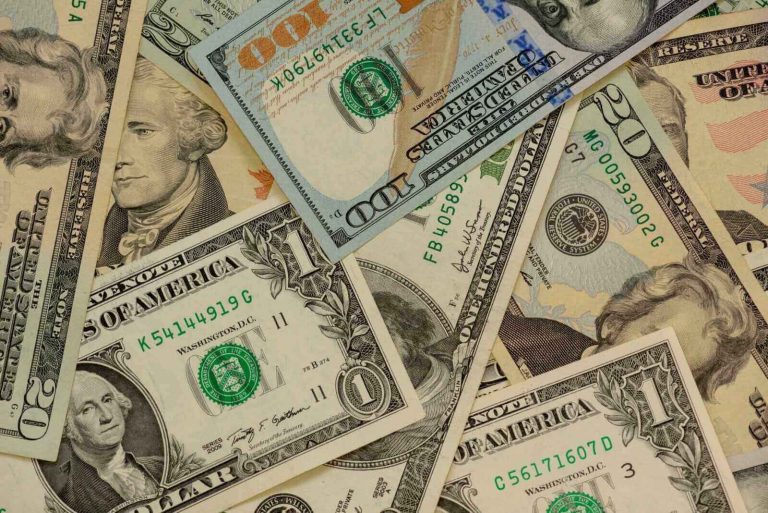Key Takeaways
- The US dollar index (DXY) remained stable as softer-than-expected US CPI data hinted at potential Federal Reserve interest rate cuts.
- The euro appreciated against the dollar, supported by positive Eurozone economic figures, while USD/JPY also saw gains due to dollar weakness.
- Gold and silver experienced minor declines, with gold facing technical headwinds despite dovish CPI data, and silver supported by manufacturing strength.
- Safe-haven demand continues to buoy precious metals, driven by global uncertainties, central bank buying, and expectations of Fed rate reductions.
US Dollar Index Navigates Mixed Economic Signals
The US dollar index (DXY) exhibited minimal fluctuation by the close of trading on Friday. A US Consumer Price Index (CPI) report for September, which came in slightly below market expectations, introduced a more dovish perspective on the Federal Reserve’s future interest rate policy. This sentiment was further amplified by a decrease of 0.6 basis points in the US 10-year Treasury yield, which diminished the dollar’s interest rate advantage.
In September, the US CPI indicated a monthly increase of 0.3% and an annual rise of 3.0%, falling short of the anticipated 0.4% and 3.1% respectively. Similarly, the core CPI report for the same month registered a monthly gain of 0.2% and an annual increase of 3.0%, also below forecasts of 0.3% and 3.1%. Despite these figures undershooting expectations, the annual CPI rate matched a 16-month high, and the core CPI remained notably above the Federal Reserve’s 2.0% inflation target.
Further contributing to a less optimistic outlook for the dollar, the University of Michigan’s final reading for the US consumer sentiment index in August showed a decline of 1.4 points to 53.6, underperforming the projected decrease to 54.5.
US Economic Performance and Federal Reserve Policy Outlook
On a constructive note for the dollar, the S&P US manufacturing PMI for October rose by 0.2 points to 52.2, surpassing the expectation of remaining unchanged at 51.6. Additionally, the S&P US services PMI for October increased by 1.0 point to 55.2, exceeding market predictions of a 0.7-point decline to 53.5.
The ongoing US government shutdown continues to cast a shadow over the dollar’s performance. The prolonged nature of this shutdown heightens the potential for negative repercussions on the US economy, which could indeed pressure the Federal Reserve into considering interest rate reductions.
Market participants are currently factoring in a high probability, around 97%, of a 25 basis point rate cut at the upcoming FOMC meeting scheduled for October 28-29.
Euro and Yen Gain Amidst Dollar Softening
The EUR/USD pair saw a modest gain of 0.09% on Friday, largely benefiting from the prevailing weakness in the US dollar throughout the trading session.
The euro also received a significant boost from preliminary economic data released on Friday. The HCOB Eurozone manufacturing PMI for October increased by 0.2 points to 50.0, signaling a stronger-than-anticipated performance compared to the forecasted figure of 49.8. Concurrently, the HCOB Eurozone services PMI for October rose by 1.3 points to 51.0, surpassing market expectations of a 0.1-point drop to 50.3.
Current swap market pricing indicates a slight probability, approximately 1%, of a 25 basis point rate cut by the European Central Bank (ECB) at its upcoming policy meeting on October 30.
The USD/JPY pair experienced an increase of 0.16%, a movement primarily attributable to the generalized weakening of the US dollar across major currency pairs.
Analysis of Precious Metals Markets
December COMEX gold futures concluded Friday’s trading session down by $7.80, representing a 0.19% decrease. Concurrently, December COMEX silver futures settled lower by $0.118 dollars, a 0.24% decline. Gold prices were notably influenced by bearish technical indicators and substantial long liquidation pressure observed earlier in the week. This downturn occurred despite a dovish US CPI report, which typically serves as a supportive factor for precious metals.
Silver prices found some buoyancy stemming from the stronger-than-expected US PMI report released on Friday, which offered a positive signal for industrial metals demand.
Precious metals continue to attract robust safe-haven demand, fueled by a confluence of ongoing global uncertainties. These include the US government shutdown, potential US tariffs, elevated geopolitical tensions, active central bank purchasing strategies, persistent US-China trade friction, and concerns regarding political influence on the Federal Reserve’s operational independence. Furthermore, recent softer-than-expected US economic data reinforces the outlook for potential Federal Reserve interest rate cuts, a factor generally considered bullish for precious metals.
📊 Precious metals have also benefited from increased fund inflows directed into precious metal Exchange Traded Funds (ETFs). Prior to a late-week pullback, gold holdings in ETFs had reached a three-year high by Tuesday, while silver holdings in ETFs concurrently hit a 3.25-year high on the same day.
Expert Summary
The US dollar saw mixed reactions to recent economic indicators, with lower-than-expected CPI suggesting potential Fed rate cuts, while strong PMI data provided some underlying support. The euro strengthened against the dollar, buoyed by positive economic readings from the Eurozone. Precious metals experienced minor dips due to technical factors and profit-taking but remain supported by safe-haven demand and consistent ETF inflows.

